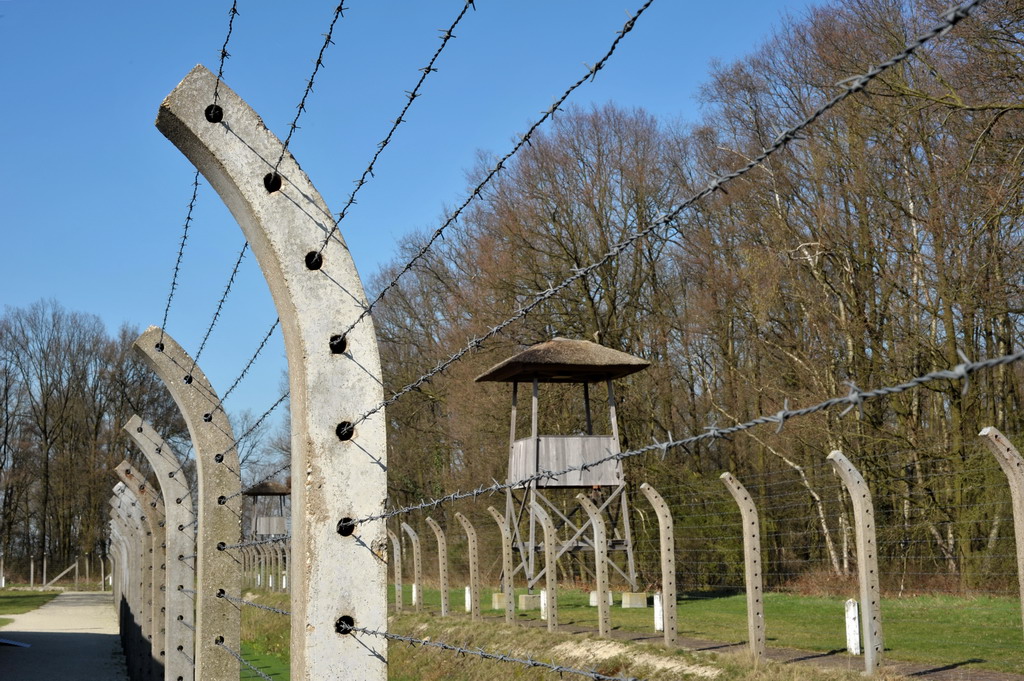
Learn about
Camp Vught
#The Netherlands
Close to the city of ’s-Hertogenbosch Konzentrationslager Herzogenbusch, or Camp Vught, was established. It was the only SS concentration camp outside Nazi Germany and its areas annexed during the Second World War. The camp was in use between January 1943 until September 1944 and held approximately 32,000 prisoners, of which at least 750 died. The first prisoners arrived at an unfinished camp in the midst of winter. Over 140 people died in the first months from beatings, illness and malnutrition. The conditions improved, but only slowly. Prisoners had to keep the camp running themselves. They were also deployed more and more intensively for the German war effort. An important workplace in the camp was the Philips-Kommando. Under pressure from the occupying forces, Philips, a company with its headquarters in the city of Eindhoven, put prisoners to work, having them perform tasks such as solder radios and make dynamo torches. The Philips-Kommando was a sought-after place to work, partly because the prisoners were given decent food there.
Camp Vught was just a small part of an international network of camps with prisoners from all over Europe and the rest of the world. They came from various backgrounds, varying from Jews to hostages to political prisoners. After leaving Camp Vught, their onward routes varied wildly too. Some prisoners were lucky enough to return home, but for many other prisoners, often Jewish, an abominable death awaited. Violence was a permanent and integral part of the system at Camp Vught. Guards wielded their power to punish, abuse and humiliate prisoners. Sometimes things got completely out of hand, such as during what became known as the ‘bunker tragedy’. One female prisoner was punished for cutting the hair of a fellow prisoner who was considered a betrayer, and no fewer than 90 women declared their solidarity. On 15 January 1944, these 90 other women were also locked up. 74 of them were placed together in cell 115, a space of barely nine square meters. When the cell doors opened the next morning, some were unconscious, many had burns from the nitric acid in the freshly limed walls and ten women had died. From spring 1944 onwards, it became obvious that Nazi Germany would not win the war. After the Allied invasion of Normandy in June, 329 men were executed at the firing squad site outside the camp in the space of just three months. Just before liberation, the camp was evacuated and thousands of prisoners were deported to Germany – the last trains departed at the beginning of September. When Allied soldiers reached the camp in October 1944, it was quiet and empty. After October 1944 the camp served as an evacuation camp for German civilian evacuees (1944-1945) and internment camp for accused collaborators (1944-1949). From 1951, it became an accommodation for Moluccan ex-soldiers from the Royal Netherlands East Indies Army and their families. In 1990 the memorial centre Camp Vught National Memorial was opened, nowadays visited by more than 70,000 people a year.